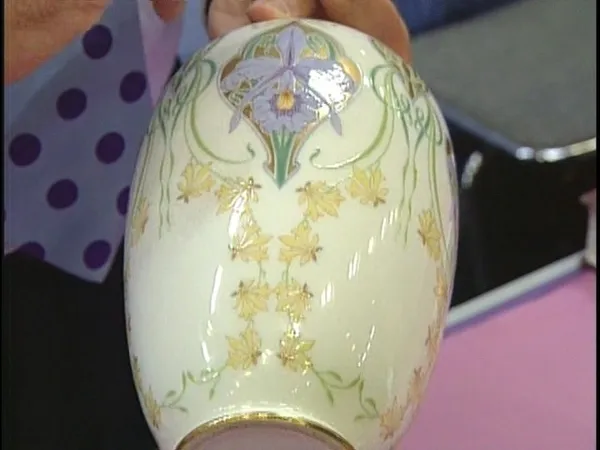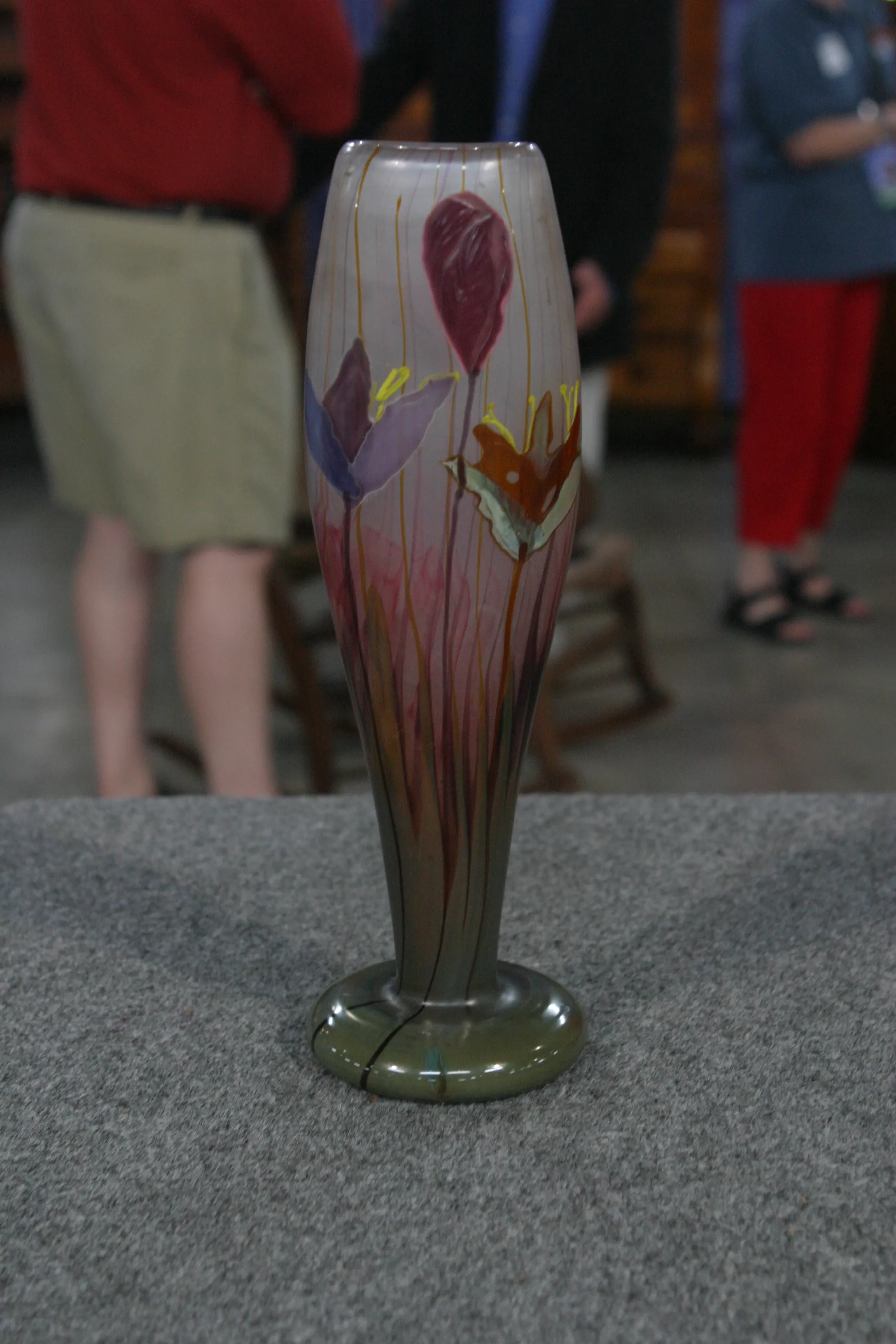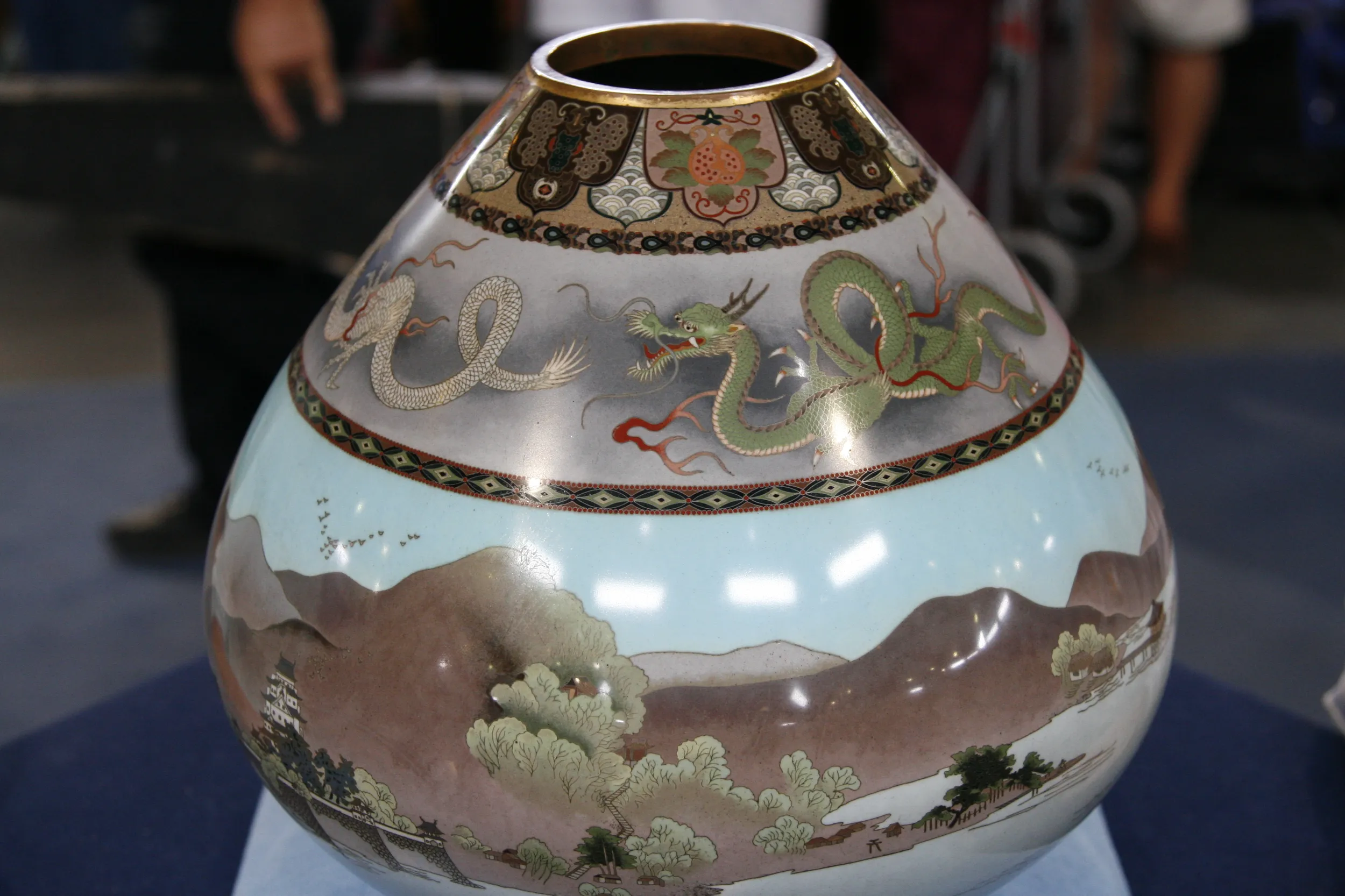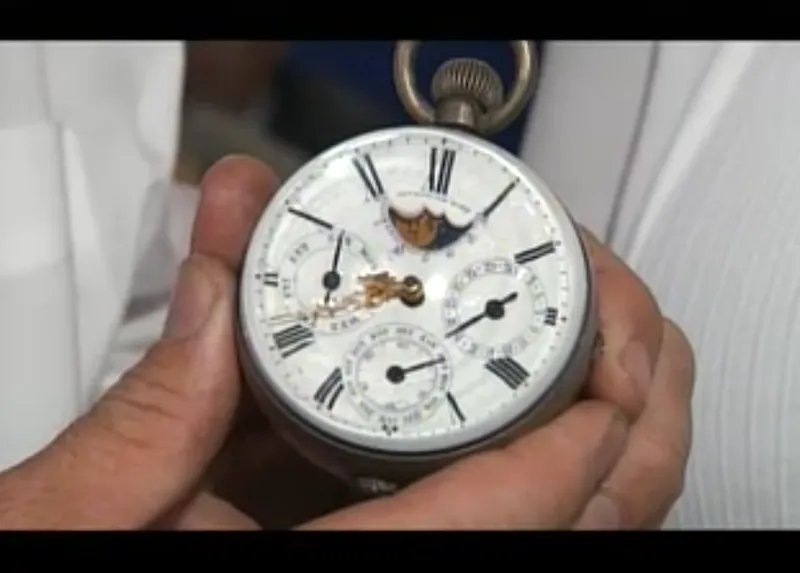GUEST: I bought it about 30 years ago. I've spent, since a teenager, traipsing through antique shows, flea markets, thrift shops. And it caught my eye. I did buy it at an antique show. I've never seen anything like it before or since. I really don't know what it is. Because of its height it looks like a vase, but it's really too high, and I thought it was like hieroglyphics.
APPRAISER: It is a vase, and it's made by a company called W.M.F., which stands for Württembergische Metallwarenfabrik. And the company was founded in 1853 in Germany. And through a series of mergers and acquisitions of buying other metalwork companies over the years, by the 1900s, they were the largest producer of metalworks in Germany. What's very interesting is that they are still in business today.
GUEST: Wow.
APPRAISER: Under the same company name, W.M.F. During the 19th century, through this series of mergers and acquisitions, they would buy these smaller companies that produced different styles of objects. And so in the 19th century, they were producing not only housewares, but Victorian decorative objects and accessories. And then as we moved into the Art Nouveau period, they're most well known in the collecting categories for Art Nouveau. That was really their sort of sweet spot for decorative objects. Candelabras, almost all silver plate, they never worked in silver. But also worked in mixed metal as well. What's really unusual about this is we believe it dates from the 1930s. You felt perhaps it was hieroglyphics. We've sort of coined the phrase here "Aztec Revival." Because it has this sort of Aztec, Inca style and design. It's made of copper with a silver overlay. You have these wonderful designs. And you can also see as we move down, there are these some areas such as here where they've put this sort of nice bronze wash on it. And then they've etched it back so you can see the copper beneath it. And then as we move all the way down, we were looking at the base, trying to figure out whether it was originally silver plated or not. Just on the inner edge here, there's still traces of silver plate. And what we suspect is the base was silver plated, and we had an overzealous cleaner at some point in its life that it just cleaned the base off. And I can also show you the mark on it. Is right here, and it says W.M.F. very clearly. The design goes all the way around. Really interesting design and very unusual for W.M.F.'s work.
GUEST: Could that have been hand-painted or by machine?
APPRAISER: It would have been machine-done and then finished by hand. How much did you pay for it?
GUEST: Well, at the time it was a big stretch for me, but I paid $750, and I've always wondered if that was a mistake.
APPRAISER: Well, if you love it, it's never a mistake.
GUEST: Okay.
APPRAISER: Don't forget that. But in the case of this, we did some research. And we were actually able to find an almost identical example that sold in 2015 at auction, so very, very recently. That piece had an estimate of $3,000 to $5,000. And it sold for $5,000.
GUEST: Wow. (laughing) Wow. You're kidding.
APPRAISER: I'm not kidding. So we feel very confident that we could put a similar estimate of $3,000 to $5,000, and it would sell for around about $5,000 at auction.
GUEST: That amazes me. All the people who made fun of me all these years, I can now have the last laugh. Wow, that's great.
APPRAISER: W.M.F. comes up for auction all the time. $5,000 is a huge number for them.








